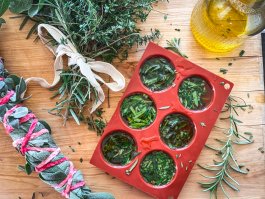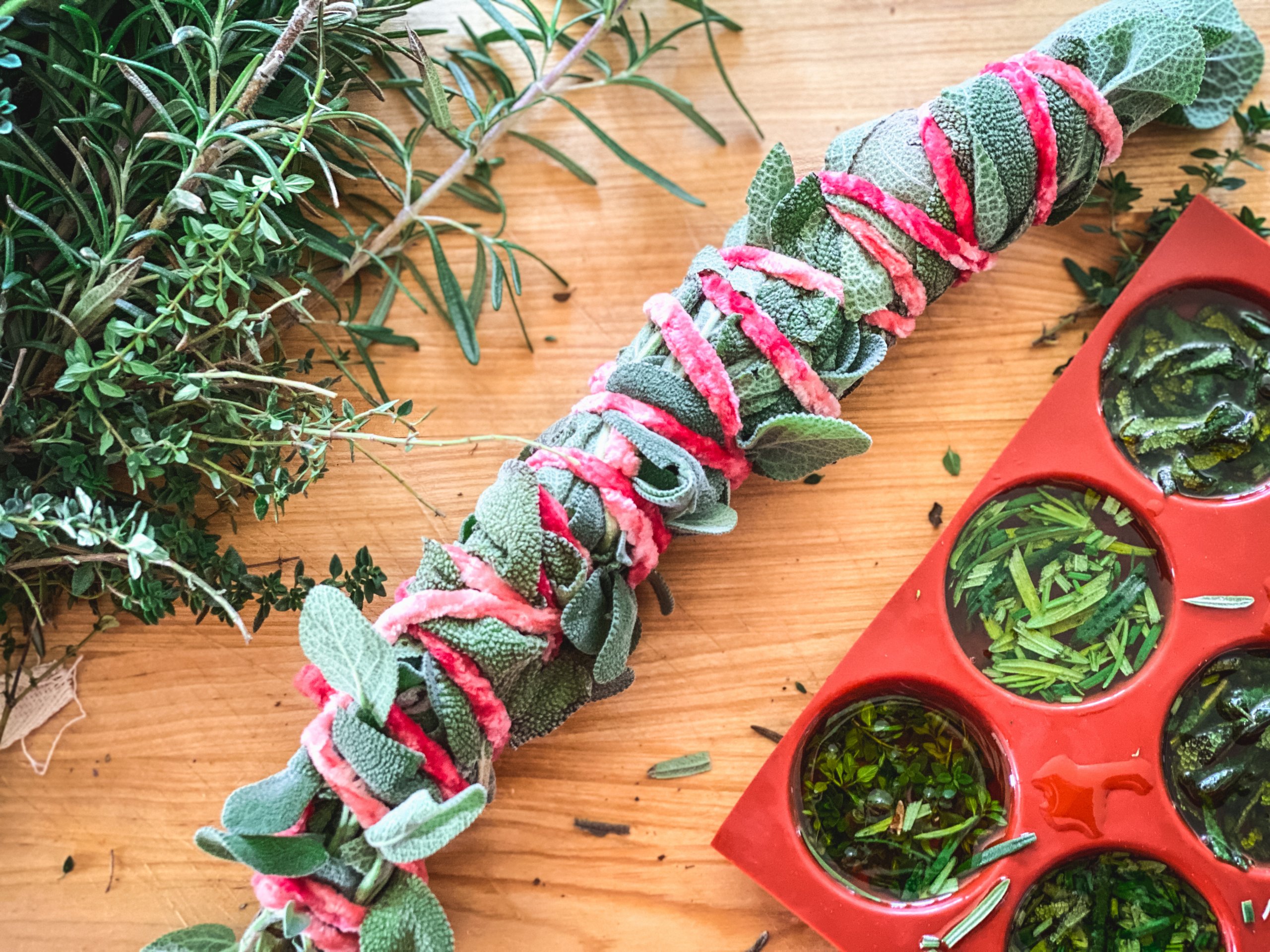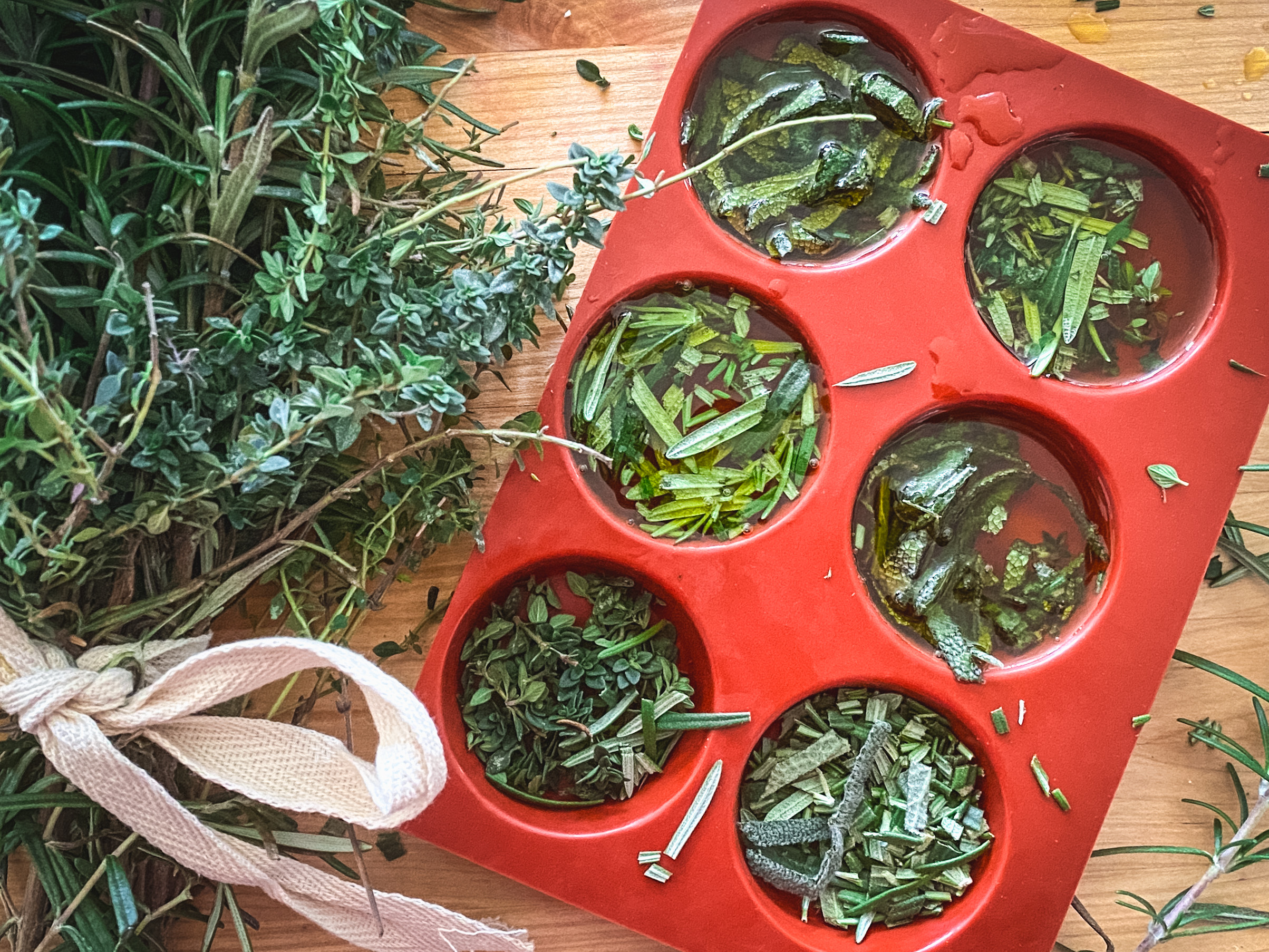
I spent all summer in my garden, delighting in my fresh vegetables and generously seasoning delicious recipes with an abundance of fresh herbs. My herb garden is right along the pathway to my home, so I love smelling the mint, then the basil, then the thyme, as I walk toward the house. But now with winter looming over us and the first frost ready to murder them all, I’m switching gears to harvest mode, and getting creative with ways to keep my home-grown herbs part of my daily cooking throughout the winter. I’m excited to share with you how to harvest fresh herbs in the fall to use all winter long.
Harvesting Fresh Herbs and Garden Clean Up
It’s important to know if your herbs are annuals, biennials, or perennials, as it will impact the way you harvest them. For annuals like basil, cilantro, and dill, you can go to town with your clippers and snip them at the base of the stem. These plants won’t be coming back, so there’s no need to be precious.
For biennials and perennials, since they’re coming back at least for one more season, it’s important to take care when harvesting. Some examples of perennial herbs (ones that will return year after year) are mint, rosemary (in some zones), thyme, fennel, chives, and oregano. Some biennials (plants that will sustain for two seasons) include herbs like sage and parsley.
For these herbs, you’ll want to trim off the dead stems and remove weeds from around the plants, in addition to harvesting any remaining crop. If you don’t remove the dead bits and trim the plant down, there’s a higher likelihood that the plant will shed its seeds and wind may carry them to other parts of your garden and yard. Some of these perennials can be invasive if not carefully trimmed back each year. I had a mint plant go wild a few years back, so it’s good to stay on top of this. Trust me, you don’t want a yard of mint, it’s not as fun as it sounds, it’s not even as fragrant as it sounds.

Drying Your Herbs
A popular method for preserving fresh herbs is to dry them. With an herb like sage, you can bind them tightly for smudge sticks, or you can hang them to air-dry. Or, you can speed up the process using an oven, microwave, or food dehydrator if you’re using them for culinary uses. I recommend researching to see which method works best for each particular herb, but once the herbs are dried you should store them in airtight containers (I prefer glass jars) in a cool, dry, cupboard. I find that the drying method yields the most potent and aromatic results.
Freezing Herbs
If you don’t have a lot of time on your hands, a faster way to harvest fresh herbs in the fall to use all winter is to freeze them. Rinse the herbs and let them dry in a single layer on a paper towel for about an hour, then place them in labeled freezer bags. Once frozen, the herbs can be pulled apart easily in small amounts needed for your recipe and whatever is unused can be returned to the freezer. I especially love this method for bone broth, where you can just throw in a little bit of everything (I do this with leftover scallions and vegetable parts, too.)

Preserving Herbs in Oil
For an even faster method of saving herbs, you can wash, finely chop them, and place small piles in the wells of an ice cube tray. You then pour oil (I use extra virgin olive oil) over the herbs and place the tray in the freezer. Once frozen, you can empty the ice cube tray into a labeled freezer bag. These are great for use in roasts, soups, and stews. You can even get creative and freeze fresh herbs in different broths and sauces.
What’s your secret? I’d love to hear how you harvest fresh herbs in the fall to use all winter. Share your tips and tricks with me!


 Previous
Previous


Loved all the useful information will put it to good use. Thank you ????
Hello Amanda,
I clean my herbs, pack 4 cups into my food processor then add 1/4 cup olive oil. Using the chopper blade, I grind them to a paste. I use a freezer bag and put the paste in, flatten it, mark it and put it in the freezer. When you need some for a dish just break off a piece. This way is a little more concentrated so I use a little less. It will keep in the freezer like this for a very long time.
Hope everyone has a great day!